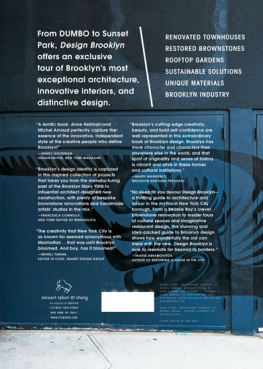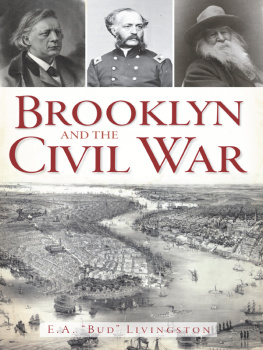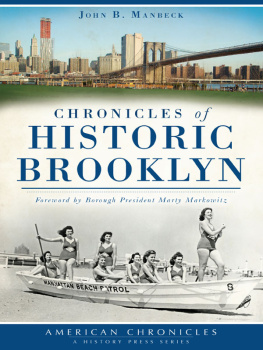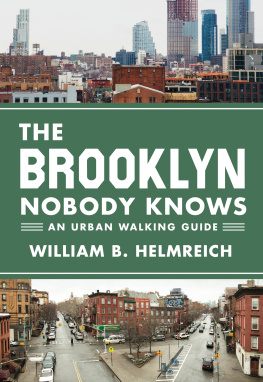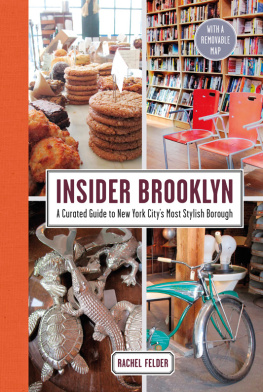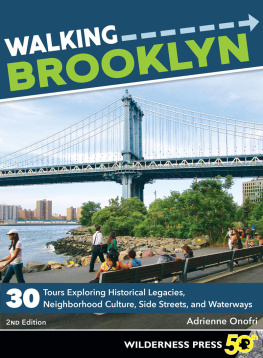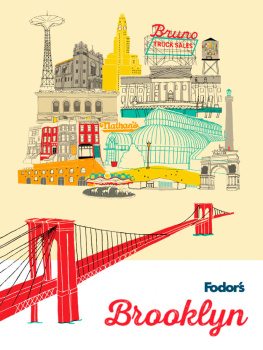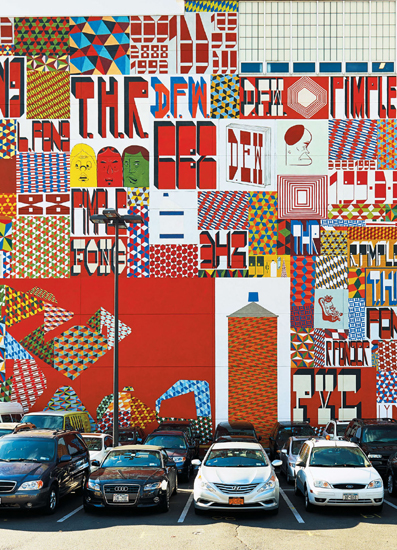
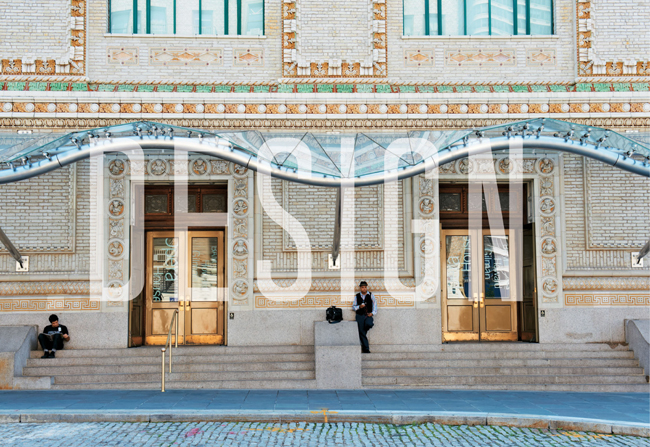
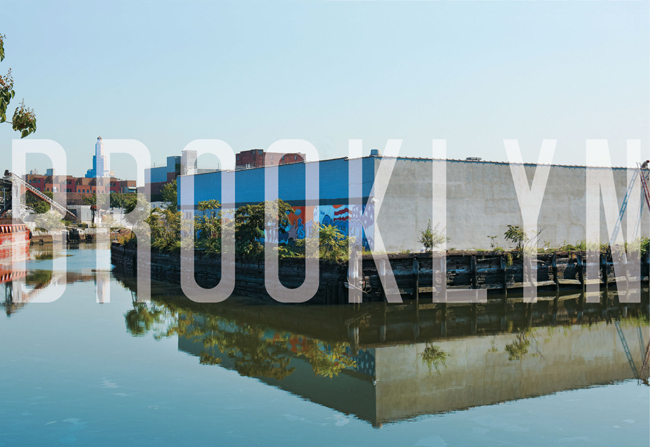

TABLE OF CONTENTS
PREFACE
BY ANNE HELLMAN
FOREWORD
AN INTERVIEW WITH MIKE D
INTRODUCTION
INNOVATION IN CONTEXT: A BRIEF HISTORY OF BROOKLYN
BY LUCAS G. RUBIN
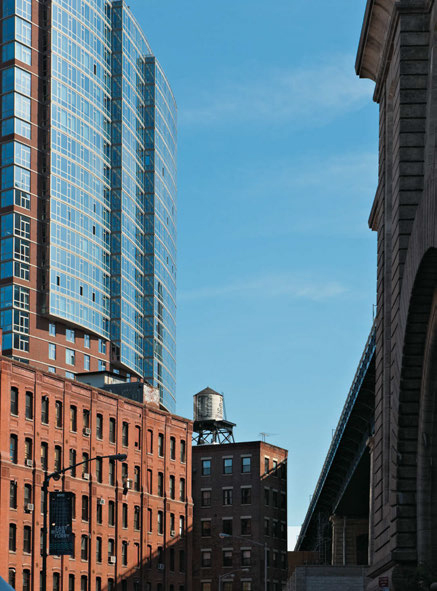
PrefaceANNE HELLMAN
WHEN I MOVED TO BROOKLYN SIXTEEN YEARS AGO, it felt like an outpost of Manhattan; now in many ways Brooklyn is its own center. Back then, friends had to make an effort to visit me, as did I if I wanted to join them in the city on the weekends. But the longer I lived here, the less time I spent in Manhattan, and the more inspired I became to get to know Brooklyn better.
When I was in my twenties and living in Williamsburg, new bars and restaurants were opening every month. An entire neighborhood changed before my eyes, from a desolate warehouse district to a vibrant art and music scene. This has taken place throughout Brooklyn in the past few decades: a new wave of artists, writers, musicians, and people of all professions has moved into the borough and made it a destination in its own right.
From Williamsburg to Boerum Hill to Carroll Gardens and finally to Cobble Hill, I made my way from home to home. Each of these neighborhoods, like all of Brooklyns communities, has something unique to offer. My familys quest was to find a home where we could raise our children, and this is a common theme in Brooklyn. For many others the search is for a place where they can put down roots as small businesses, because workspaces as well as storefronts are more attainable here than in Manhattan. No matter what the pursuit is, with each new inhabitant an old building is kept aliveat least, that is the goal in a place with so much history. Each new business, each new home leaves an impression on these structures and their surroundings. Brooklyn is regenerating at a rapid rate, producing new art, new design, new cuisine, and new ideas for environmental living.
As I and the other members of this books teamMichel Arnaud and Jane Creechbegan our research into new Brooklyn design, there were multiple facets that could be focused upon, from wall art and ironwork, to public spaces and private gardens, to townhouse structure and new construction. There were also countless neighborhoods to explore, each one with its own spirit and sense of origin. We set out to discover as many new design happenings as we could in as many different neighborhoods as possible and found breathtaking new green architecture, such as the Brooklyn Botanic Garden Visitor Center and Sunset Park Materials Recycling Facility, dozens of innovative townhouse renovations and sustainable rooftop gardens, preeminent Brooklyn entities such as the Brooklyn Navy Yard and the Brooklyn Academy of Music, and many historic restorations, such as Fort Greene Park, made possible by generous gifts of time and effort. Although the resulting book does not, and probably could not, include all of these new spaces and ideas, the aim is to represent a full range.
Having lived here awhile, I was not as surprised by the sheer number of design innovations occurring everywhere in Brooklyn as I was by how interconnected they all were. To us, this signaled a much more important movement. Each designer we contacted generously linked us to another, so that soon we had a web of Brooklyn designers, architects, builders, and artisans to explore. Just as each neighborhood has a distinct cultural identity and design bones (some more apparent than others), the work of the designers and artists living and creating in these neighborhoods has its own distinct style and voice. Brooklyns model creative communitysupported by different styles and expressions side by sideis as inspiring as it is boundless. And its work has only just begun.
Design Brooklyn explores recent architectural and interior designs, from the spectacular to the everyday, throughout the borough. The gallery section offers a visual tour of Brooklyn: its bridges, its promenades, its wall art and markets, its one and only Coney Island. The chapters feature public spaces, private homes, and local restaurants and bars, as well as parks and gardens. Chapter 1, Renovation, looks at combinations of old and newnot just preserving the old, but renewing with modern improvements such as the conversion of a factory building into the popular Wythe Hotel in Williamsburg and residences that put a fresh spin on Victorian interiors with mid-century furniture and contemporary wall coverings. This is followed by Restoration, which discovers homes, a public park, and Janes Carousel, all meticulously returned to their original states, showing how careful architectural preservation can thrive next to structures exploring more contemporary ideas. Chapter 3, Innovation, reveals some of the most cutting-edge moves in architecture and design, from the BAM Fisher to avantgarde interior designs like Robertas in Bushwick, composed with unconventional materials. The final chapter, Industry, shows the breadth of Brooklyns budding small-scale urban manufacturing, beginning in the Brooklyn Navy Yard and reaching out to designers studios in other postindustrial areas.
Brooklyn design has become its own phenomenon, far-reaching and distinct. It is bound to invigorate and inspire anyoneanywhere.
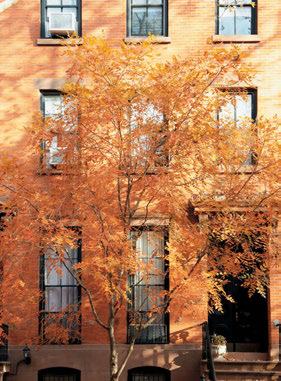
FOREWORD
AN INTERVIEW WITH MIKE D

AH:I have to ask: When the Beastie Boys wrote No Sleep Till Brooklyn, what were your inspirations for the song at the time?
MIKE D: We were sitting around at an apartment I had in the West Villageand thats what we would do, sit around and write lyrics every nightand it just seemed like one of the funniest things we could come up with at the time. Then it quickly evolved into this kind of tour story, kind of a fantasy about being on tour and then getting back home to Brooklyn.
As a band, we started here in Brooklyn, on the top floor of the Yauchs townhouse [in Brooklyn Heights]. And thats where we started playing and practicing. Its funny because if his parents were not crazy enough to let us actually play music on the top floor of their house, I dont think any of it would have been possible. As long as it was after school and before dinner, we could make a racket.
AH:Now that you live in Brooklyn, what do you think has changed about it since your school days in Brooklyn Heights? Whats the same?
MIKE D: In a lot of ways, Brooklyn Heights is similar. Cobble Hill in certain ways is similar but also vastly different. You had two things. One, in the early seventies, there was this homesteading movementAdams parents were definitely part of it; his dad is an architectin which these younger artists, architects, and other urban professionals, instead of just getting an apartment in Manhattan or moving to the suburbs with kids, would come to Brooklyn and renovate a townhouse, in many cases reconfiguring these buildings
Next page
